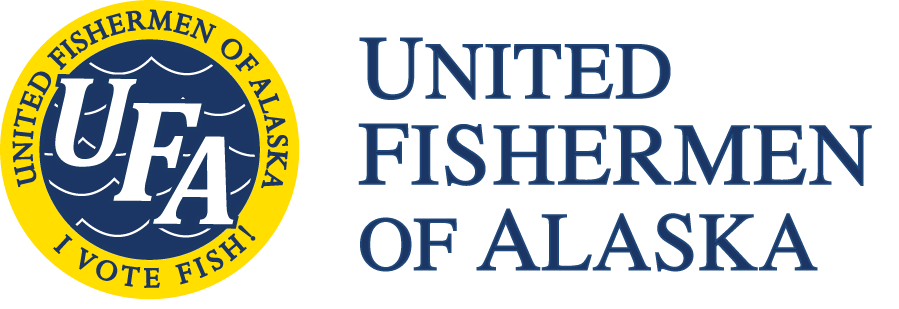The statewide commercial fishing umbrella association United Fishermen of Alaska has released its updated set of data sheets for major Alaska communities and boroughs. The group is seeking to provide UFA groups, members, and the public with economic information to illustrate the industry’s significance in their communities.
“Last year we introduced this project and it has been very well received by fishermen, city officials, legislators and media. These statistics are important not only to our member organizations and coastal communities, but for talking points to assist professional fishermen in advocating at public meetings, in correspondence, and even in conversations with their neighbors,” said UFA President Arni Thomson. “Commercial fishing and seafood processing is often neglected in discussions about the relative importance of Alaska industries among policymakers and the public. UFA feels it is vital to our mission to bring this information out in a way that is clear and useful to help illustrate what the fishing industry brings back to the state of Alaska and its communities. Fishermen armed with the facts and figures about the value of their fisheries have become ambassadors for their industry,” Thomson concluded.
“The most commonly quoted number to gauge fishery economics is ex-vessel value, the price paid to fishermen at the docks prior to the fish and shellfish being processed. Quite often this value represents only half, or less, of the product value after it is processed, boxed and frozen. The value added processing (manufacturing) function then results in “the first wholesale value”, which approximates the export value of the product. At this point, it still does not include the value of additional jobs and income for transportation, distribution, and wholesale and retail sales and restaurant sales.
“Alaska’s seafood exports are valued at $2.5 billion in 2011, comprising nearly half of total state exports, according to an announcement by Alaska Governor Sean Parnell earlier this year. This is important to all Alaskans in terms of tax revenue contributions. In fiscal year 2011, the industry contributed over $70 million in state taxes and fees in addition to local fish taxes.
“Many tend to compare ex-vessel value to the total economic value of other industries, so the economic impact of the fishing industry is routinely devalued and seldom is it corrected.
“While some of the harvest in offshore waters is taken by larger vessels and entities, most commercial fishing operations in Alaska are small LLCs or family businesses, with significant local investment in vessels, equipment, permits, and years of professional experience,” Thomson said.
The community profiles include Anchorage, Cordova, Dillingham, Homer, Juneau, Haines Borough, Kenai, Ketchikan, Kodiak, Petersburg, Seward, Sitka, Wrangell, Aleutians West Census Area, Aleutians East Borough, Bristol Bay Borough, Kenai Peninsula Borough, Lake and Peninsula Borough, Unalaska-Dutch Harbor, Mat-Su Borough, Valdez, Bethel, Yukon-Koyukuk Census Area, Prince of Wales-Outer Ketchikan Census Area, Skagway-Hoonah Angoon Census Area, and Yakutat.
The fact sheets were released at the Pacific Marine Expo trade show in Seattle and are posted on the UFA website at http://www.ufa-fish.org/cff.htm.
“We see more Alaska fishing families in one place at the Expo than we can reach in any one time in Alaska, but anyone who cannot make it to Expo can download the fact sheets from our website or obtain them from their local UFA member group,” said UFA Executive Director Mark Vinsel.
“UFA is providing a service to individual fishermen and UFA member groups to make their economic value and contributions known in their own communities. Grassroots work that is necessary for access to fisheries needs to be networked through the thousands of fishing and support service businesses in Alaska,” said UFA Executive Director Mark Vinsel.
UFA represents 37 Alaska commercial fishing associations from fisheries throughout the state and federal offshore waters, and is online at www.ufa-fish.org .
Additional information on State of Alaska data sources used by UFA for the Fishing Fact
Sheets: Due to common confusion and varying numbers available among many agencies and organizations that gather and report on fisheries, UFA has used state and federal government sources and has footnoted each statistic with online sources. Commercial fishing permit activity, estimated earnings by permit holders, and vessel homeports are from AK Commercial Fishery Entry Commission (CFEC).
Crew numbers have been obtained from the Alaska Department of Fish and Game 2011 Crew license
list, and is the number of purchasers of full year crew licenses who list their address in a given city.
2011 population estimates used to calculate percentage of resident skippers and crew who fished is
from the Alaska DCCED Alaska Community Information online database. Processor employment and
wages data is from the Alaska Department of Labor, and processor first wholesale value by census
area is provided by Alaska Seafood Marketing Institute. Revenue figures are from 2011 Alaska Dept
of Revenue Shared Taxes Report. National rank and NOAA total landings and value for selected ports
is from the NOAA Fisheries Office of Science & Technology.

